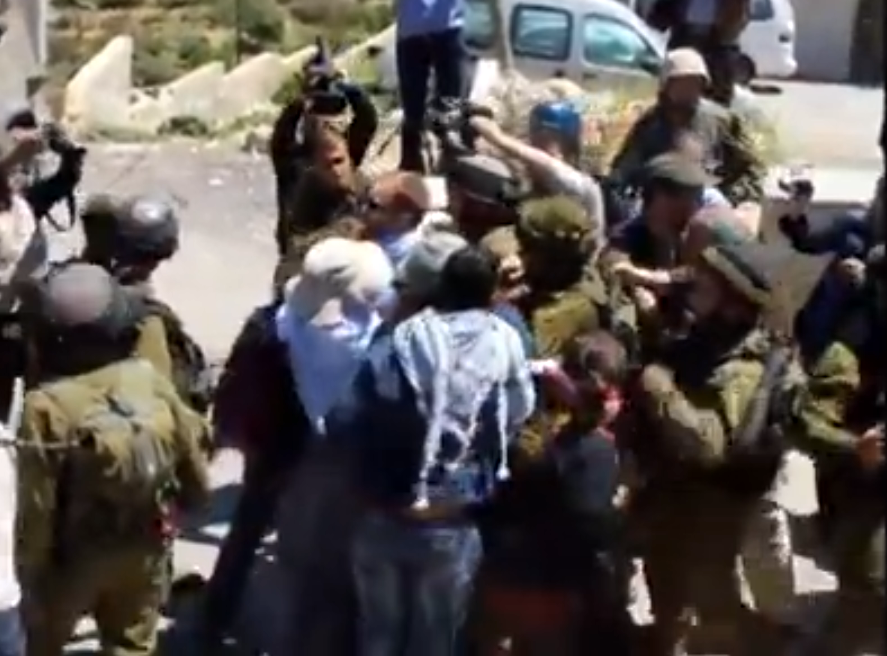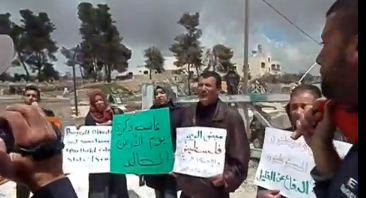Tag: Hebron
-
Israeli forces arrest two ISM activists and two Israeli activists at demonstration in Hebron
12th April 2014 | International Solidarity Movement, Khalil Team | Hebron, Occupied Palestine Yesterday afternoon in al-Khalil (Hebron), approximately 70 people attended a demonstration outside the Rajabi building where four protesters were arrested, two ISM activists and two Israeli activists. Many different Palestinian groups working against the occupation organized the demonstration. The protest began after…
-
Demonstration against settlement expansion in Hebron
30th March 2014 | International Solidarity Movement, Khalil Team | Hebron, Occupied Palestine At noon today approximately 50 protesters held a demonstration outside the Rajabi Building, Hebron, in protest of the recent court decision to let settlers take over the building. Settlers taking over the house would mean a huge expansion of the illegal settlement…
-
Armed settlers occupy village land in Hebron
14th March 2014 | International Solidarity Movement, Team Khalil | Arab ar Rashyaida, Occupied Palestine On Tuesday 11th March 2014 villagers from Arab ar Rashyaida, 15 kilometers (10 miles) west of Hebron, noticed that a large tent and industrial digger had moved onto a hill top on a villagers land. ISM Hebron was called and accompanied…



